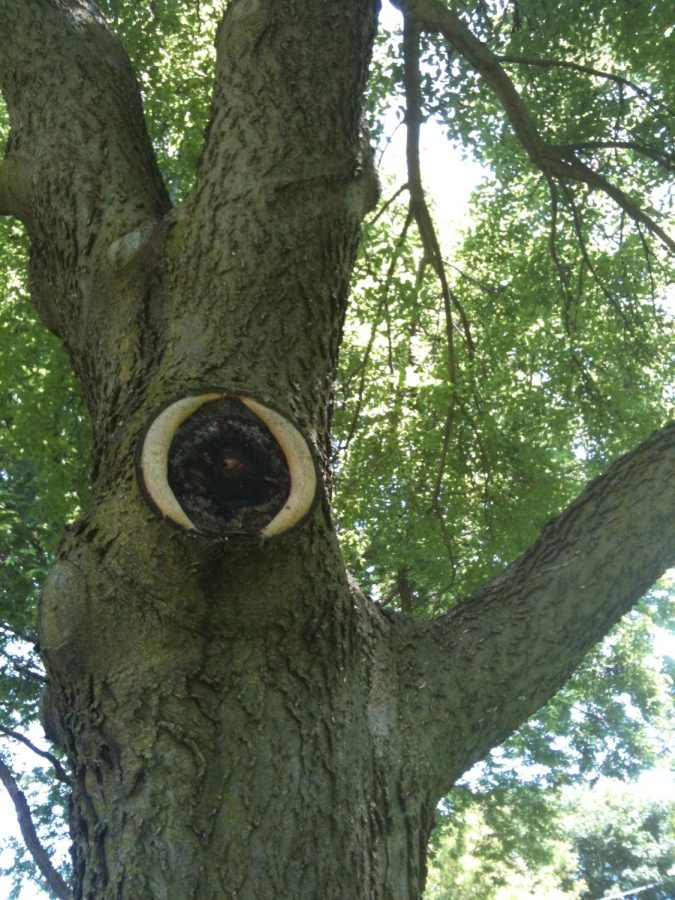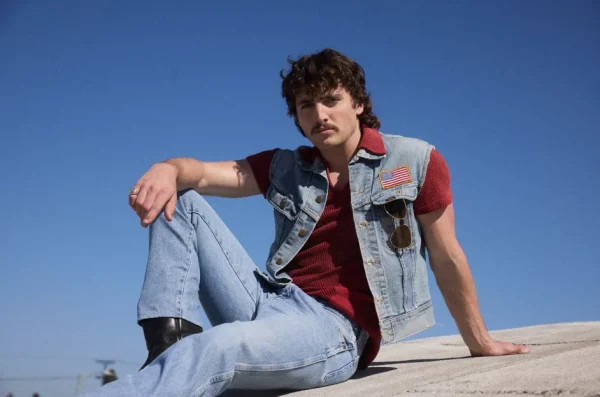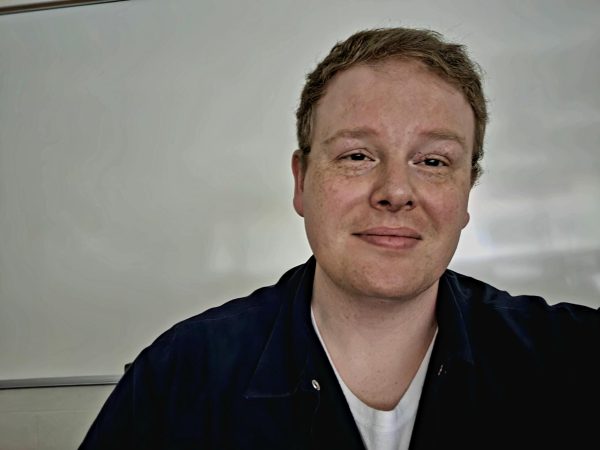Letter to the editor: Universities of choice protect their beloved green spaces
In a time of evolving consciousness regarding our relationship to the planet, we, the members of the OU community, also need to evolve. It’s difficult to redefine aspirations and success from twentieth-century ideals such as, “Build, profit, adorn, expand,” to twenty-first centurty imperatives such as, “Preserve, restore, rewild, let be.” But in countries, corporations, universities, and even private front and back yards across the world, those are the directions we must evolve towards. We can each help adapt the best balance for preserving the life of the planet, an enormous and interconnected system in which we are just a small part. As small a part, you could say, as the plot of forest on the southeast corner of Walton and Adams on our campus. Small, but valuable nonetheless.
I write this piece because Oakland University is on the edge of making a bad decision, based on last century’s ideals of expansion and profit – to demolish the lovely plot of forest on the southeast corner of Walton and Adams and build a boutique hotel and shopping center. I implore the Board of Trustees and our administration to toss this outdated idea into the garbage can, and instead to take up the newest and improved modes of scientific and humanistic thought our university promises to instill in students, and to consider the value of the land as it stands.
I also implore students to make your opposition to this plan known. When I brought up the East Campus development, as it’s known, in my Classical Mythology courses—where my students spend time thinking about the transformative power of trees, especially when our texts’ characters turn into them—the response was a unanimous collective groan. I cannot stress enough how much our students value the green spaces of our campus. Moreover, I can easily envision Matilda Dodge Wilson sternly mandating this plot of forest to remain, for its own beauty (not to mention the wonderful work trees do for our environment) and as a kind of announcement of the stunning landscapes of Meadowbrook and our OU campus waiting beyond it.
President Pescovitz has given OU many gifts, including her vision for sustainability, which is part of her goal to make OU a “university of choice.” But if current and prospective students witness that plot of forest taken down for shopping center and hotel (which their education will teach them to see as far less valuable than the trees that stand there now), it will be a factor in potential students choosing elsewhere to go, and in our current students’ disappointment at the outmoded values their university would espouse by doing so.
A shady, leafy, tree-rich campus is part of the way young people imagine college (and their “university of choice”), and this is no accident. Just as Shakespeare’s characters famously retreat to forested “green worlds” to find resolve and resolution, students are naturally attracted to campuses that emulate the meditative realms given by woodland and meadows—all of which OU possesses—as a setting for their studies. So instead of decimating our campus green space, let’s pursue President Pescovitz’s vision to expand sustainability and increase OU’s reputation into a “university of choice” by preserving this space. Could OU involve its beautiful forests and fens into a carbon offset program? How can we turn away from seeing this forest as “under-utilized land” (the description the East Campus development plan gives it, a twentieth-century evaluation if ever there was one) and embrace a twenty-first century vision of more widely acknowledging its worth as it is?
I know very well that development of land will continue to be necessary at different times for different reasons. But the backward-thinking East Campus plan does not constitute any such necessity. As many difficult decisions of our time are, this is a matter of prioritizing life and the interconnectedness of eco-systems—a gift to us that at the same time includes us—over death and dearth and capitalistic delusions of what is good or necessary.
I noted above that the woodland plot at stake in this development decision is small but valuable. Perhaps it is all the more valuable because it is small, standing out against the rest of its already overdeveloped crossroads. In 1897, the poet Gerard Manley Hopkins wrote about a grove of beloved aspens cut down:
My aspens dear, whose airy cages quelled,
Quelled or quenched in leaves the leaping sun,
All felled, felled, are all felled;
Of a fresh and following folded rank
Not spared, not one …
And in that line above we can see how each individual tree meant something to him – valuable because modest, because it was a single individual in the grove. If the trees at the southeast corner of Adams and Walton were the last stand of trees in southeast Michigan, wouldn’t we do anything to keep them from being cut down? I will leave the last word to Hopkins’ “Binsey Poplars,” and his outstanding lines regarding misguided thinking about nature:
O if we but knew what we do
When we delve or hew —
Hack and rack the growing green!
….
Where we, even where we mean
To mend her we end her ….












Anon • Oct 29, 2022 at 4:17 PM
Alumni do not fondly remember their time at school when they longingly looked to the drainage at the edge of the parking lot next to the concrete wall and slightly to the right of the gravel pit. Paving over everything so that the school looks like an extension campus of ITT tech in the strip mall next to the Starbucks will destroy any Alumni donations in the future- donations which the Board of Trustees claim to care about. I don’t see why they don’t see that.
Oakland Post, can you please find out how many hours per month the Board of Trustees members and the President actually spend on campus?
Paula Rosenbusch • Oct 18, 2022 at 1:28 PM
Thank you Katie for such a beautiful and eloquently written “Letter To The Editor”. You speak for so many of us that believe that these short sighted decisions today will have far reaching implications and create irreparable harm to our environment and to our community.
Shannon • Oct 18, 2022 at 12:34 PM
These are all incredibly important things to consider and I hope that those voting on this plan take them all into account! I agree that this is an awful idea and should be tossed. OU’s land is beautiful and important and should remain as such.
Ultimately, this is a test to see where Administration’s values lie.
Beautifully and poignantly written article.
Julie Frontera • Oct 17, 2022 at 9:44 PM
What a truly beautifully stated message! As difficult as many decisions must be for a university, this should be an easy one, this should be the one that they’re proud of in the years to come and their students and alumni are equally proud of leadership. Let this decision be the one that cements OU’s high position of respect within the community, of forward thinking and stewardship.
Rob Anderson • Oct 17, 2022 at 2:48 PM
Thanks for the terrific reminder of what’s important–and the damage we can do when we delve or hew.
Debbie • Oct 17, 2022 at 12:53 PM
Very well said! The East Campus is definitely not “under-utilized.” That description is shallow, uninformed, and utterly lacking in vision. Green space is an important, necessary, and important USE.